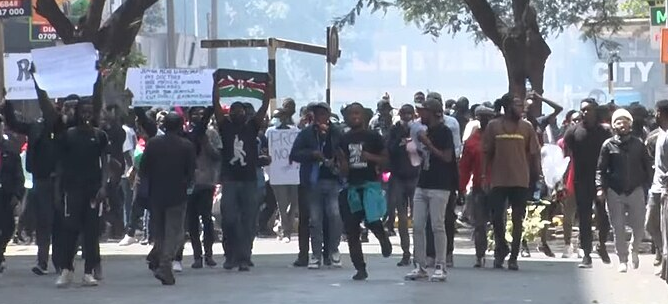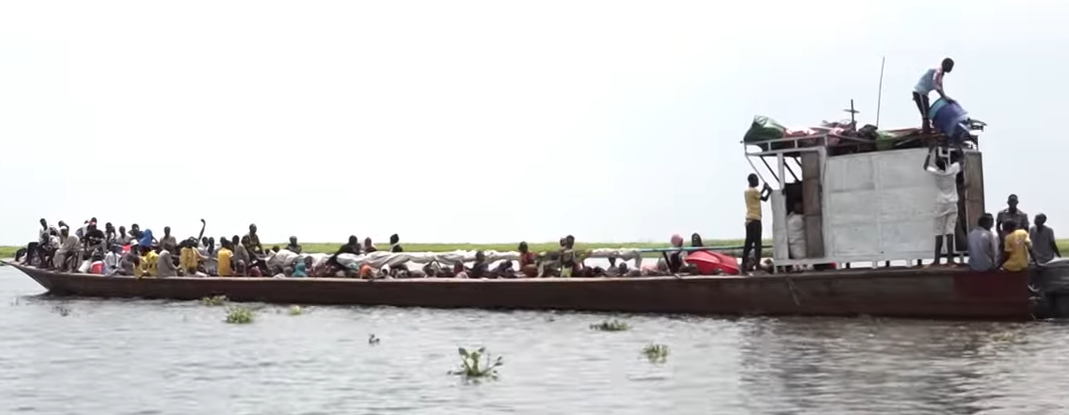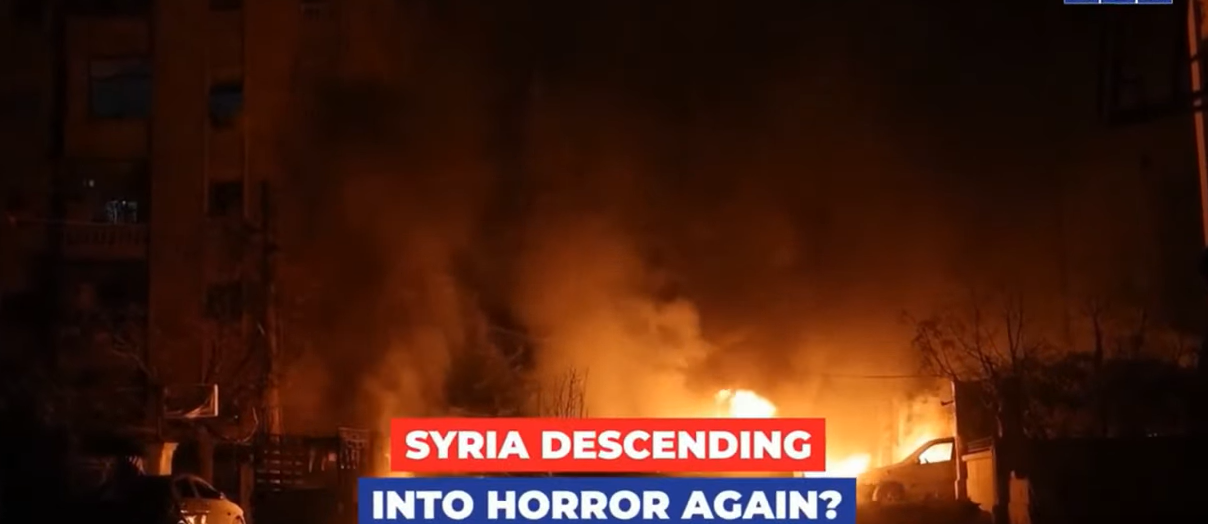[COVID-19 Pandemic\Africa]
U.S. government departments and agencies are working together to prioritize foreign assistance based on in-country coordination and the potential for impact.
Photo: YouTube
The following article gives a breakdown of U.S. aid being sent to Africa to battle COVID-19.
The U.S. Government is leading the world’s humanitarian and health response to the COVID-19 pandemic even while we battle the virus at home.
As part of this comprehensive and generous response from the American people, the U.S. Department of State and the U.S. Agency for International Development (USAID) have now committed nearly $508 million in emergency health, humanitarian, and economic assistance on top of the funding we already provide to multilateral and non-governmental organizations (NGOs) that are helping communities around the world deal with the pandemic. This funding will support critical activities to control the spread of this disease, such as rapid public-health information campaigns, water and sanitation, and preventing and controlling infections in health-care facilities.
Total U.S. government assistance in the global fight against COVID-19 provided to date includes nearly $200 million in emergency health assistance from USAID’s Global Health Emergency Reserve Fund for Contagious Infectious-Disease Outbreaks and Global Health Programs account, nearly $195 million in humanitarian assistance from USAID’s International Disaster Assistance (IDA) account, and $50 million from the Economic Support Funding (ESF), which will help governments and NGOs in more than 100 of the most affected and at-risk countries during this global pandemic. In addition, through the State Department’s Bureau of Population, Refugees, and Migration, which is responsible for the Migration and Refugee Assistance (MRA) account, we now have a country-by-country breakout of the previously announced $64 million in humanitarian assistance for the United Nations Refugee Agency (UNHCR) to address threats posed by the pandemic in existing humanitarian crisis situations for some of the world’s most vulnerable people as part of the UN’s Global Humanitarian Response Plan for COVID-19.
U.S. government departments and agencies are working together to prioritize foreign assistance based on in-country coordination and the potential for impact. With new and previously announced funds, the United States is providing the following specific assistance:
Africa:
Angola: $570,000 in health assistance is helping provide risk-communications and water and sanitation, and prevent and control infections in key health facilities in Angola. This assistance comes on top of long-term U.S. investments in Angola, which total $1.48 billion over the past 20 years, including $613 million in health assistance.
Botswana: $1.5 million in health assistance to address the outbreak. This new assistance builds on nearly $1.2 billion in total assistance in Botswana over the last 20 years, $1.1 billion of which was for health.
Burkina Faso: More than $6 million in health and humanitarian funding will go toward risk-communications, water and sanitation, preventing and controlling infections in health facilities, public-health messaging, and more. This includes $2.5 million in health assistance, $1.5 million in IDA humanitarian assistance, and more than $2.1 million in MRA humanitarian assistance, which will help protect the health of refugees, internally displaced persons, and their host communities in Burkina Faso during the pandemic. Over the past 20 years, the United States has invested more than more than $2.4 billion total in Burkina Faso, $222 million in health alone.
Cameroon: Nearly $8 million in health and humanitarian assistance will help provide infection-control in key health facilities, strengthen laboratories and surveillance, prepare communities, and bolster local messaging. This includes $6.1 million in health and IDA humanitarian assistance from USAID, in addition to nearly $1.9 million in MRA humanitarian assistance to support refugees, internally displaced persons (IDPs), and their host communities. This assistance builds upon more than $960 million in total U.S. investment in the country over the past 20 years, $390 million of which was in health.
Central African Republic: $5.2 million in humanitarian assistance, including $3.5 million in IDA humanitarian assistance that will go toward risk-communications, preventing and controlling infections in health facilities, and safe water supply, and $1.7 million in MRA humanitarian assistance that will help protect the health of refugees, internally displaced persons, and their host communities in the Central African Republic during the pandemic. The U.S. Government has provided $822.6 million in total in the Central African Republic over the last 20 years, including $4.5 million in emergency health assistance in Fiscal Year (FY) 2019.
Republic of Congo (ROC): $250,000 in health assistance will address the outbreak. The United States has invested in the Republic of Congo for decades, with more than $171.2 million in total U.S. assistance for the ROC over the last 20 years, $36.8 million of which was for health assistance.
Chad: More than $3 million in humanitarian assistance, including $1 million in IDA for preventing and controlling infections in health facilities, raising community awareness of COVID-19, and improving hygiene, and more than $2 million in MRA humanitarian assistance to help protect the health of refugees and their host communities in Chad during the pandemic. This new assistance builds upon the foundation of nearly $2 billion in total U.S. assistance over the last 20 years, including more than $30 million in health assistance.
Côte d’Ivoire: $1.6 million in health assistance to address the outbreak. Over the past 20 years, the United States has invested more than $2.1 billion in long-term development and other assistance in Côte d’Ivoire.
Democratic Republic of the Congo: $14.4 million, including $14.0 million in health assistance and IDA humanitarian assistance that will improve the prevention and control of infections in health facilities, and support improved awareness of COVID-19, including by working with religious leaders and journalists on risk-communication messaging. An additional $400,000 in MRA humanitarian assistance will help protect the health of refugees, internally displaced persons, and their host communities in the Democratic Republic of the Congo during the pandemic. This builds upon more than $6.3 billion in total U.S. assistance over the past 20 years, including nearly $37 million in health.
Djibouti: $500,000 in health assistance to address the outbreak. The United States has already invested more than $338 million total in Djibouti over the last 20 years.
Eswatini: $750,000 in health assistance to address the outbreak. Funds will go to bolstering Eswatini’s emergency health response, which may include commodity procurement, contact tracing, laboratory diagnostics, and raising public awareness. This assistance builds upon the foundation of U.S. assistance in Eswatini, which totals more than $529 million in total assistance over the last 20 years, including more than $490 million in health assistance.
Ethiopia: More than $9 million in assistance to counter COVID-19, including $8.3 million in health and IDA humanitarian assistance for risk-communications, the prevention and control of infections in health facilities, disease-surveillance, contact-tracing, and coordination; and $789,000 in MRA humanitarian assistance for refugees, internally displaced persons (IDPs), and their host communities. This assistance is in addition to the United States’ long-term investments in Ethiopia of more than $13 billion in total assistance, nearly $4 billion in health alone, over the past 20 years.
Ghana: $1.6 million in health assistance to address the outbreak. This new assistance builds upon $3.8 billion in total U.S. assistance to Ghana over the last 20 years, including nearly $914 million in health assistance.
Guinea: $500,000 in health assistance to address the outbreak. The United States has invested nearly $1 billion in total assistance for Guinea over the last 20 years, including $365.5 million in health assistance.
Kenya: Nearly $4.5 million in health and humanitarian assistance, including $3.5 million in health assistance to bolster risk communication, prepare health-communication networks and media for a possible case, and help provide public health messaging for media, health workers, and communities; and $947,000 in MRA humanitarian assistance for refugees and host communities. This COVID-19 specific assistance comes on top of long-term U.S. investment in Kenya, which totals $3.8 billion in total U.S. assistance to Kenya over the last 20 years, including $6.7 billion in health assistance alone.
Madagascar: $2.5 million in health assistance to address the outbreak. The United States has invested more than $1.5 billion in total assistance for Madagascar over the last 20 years, including nearly $722 million in health assistance alone.
Malawi: $4.5 million in health assistance to address the outbreak. The United States has provided more than $3.6 billion in total assistance for Malawi over the past 20 years, including more than $1.7 billion in health assistance.
Mali: $5.7 million in assistance for COVID-19 response includes $4.4 million in health and IDA humanitarian assistance for risk communication, infection prevention and control, and coordination, and nearly $1.3 million in MRA humanitarian assistance to support refugees, internally displaced persons, and their host communities in Mali during the pandemic. This new assistance builds upon decades of U.S. investments in Mali, which totals more than $3.2 billion in total assistance over the last 20 years, including more than $807 million in health assistance.
Mauritania: $250,000 in health assistance to address the outbreak. The United States has provided more than $424 million in total assistance over the last 20 years for Mauritania, including more than $27 million in health, building a strong foundation for their pandemic response.
Mauritius: $500,000 in health assistance to address the outbreak. This new assistance builds upon the foundation of more than $13 million in total U.S. assistance over the past 20 years, including $838,000 in health assistance.
Mozambique: $5.8 million in health and IDA humanitarian funding will help provide risk communication, water and sanitation, and infection prevention and control in key health facilities in Mozambique. The United States has invested nearly $6 billion total investment over the past 20 years, including development and other assistance, including more than $3.8 billion in health assistance.
Lesotho: $750,000 in health assistance to address the outbreak. This new assistance builds upon decades of U.S. investments in Lesotho, which totals more than $1 billion in total assistance over the last 20 years, including more than $834 million in health assistance.
Liberia: $1 million in health assistance will provide critical aid for all 12 Liberian counties (emergency operation centers, training, contact tracing, hospitals, and community health services), support quarantine efforts, and provide community level support. The United States has helped lay a strong foundation for Liberia’s COVID-19 response through more than $4 billion in total assistance over the past 20 years, including more than $675 million in health assistance.
Namibia: $750,000 in health assistance to address the outbreak. This new assistance comes in addition to nearly $1.5 billion in total U.S. assistance to Namibia over the past 20 years, including more than $970.5 million in long-term health assistance.
Niger: Nearly $4 million in assistance includes nearly $2.8 million in health and IDA humanitarian assistance for risk communication, infection prevention and control, and coordination, and $1.2 million in MRA humanitarian assistance will support refugees and their host communities in Niger during the pandemic. This assistance comes on top of more than $2 billion in total U.S. assistance for Niger in the past 20 years, nearly $233 million in health assistance alone.
Nigeria: Approximately $21.4 million in assistance includes nearly $20 million in health and IDA humanitarian funding for risk communication, water and sanitation activities, infection prevention, and coordination, and more than $1.4 million in MRA humanitarian assistance for refugees, internally displaced persons (IDPs), and their host communities. This assistance joins more than $8.1 billion in total assistance for Nigeria over the past 20 years, including more than $5.2 billion in U.S. health assistance.
Rwanda: More than $2 million in assistance for Rwanda’s COVID-19 response includes $1.7 million in health assistance that will help with surveillance and case management efforts in response to COVID-19, and $474,000 in MRA humanitarian assistance to support UNHCR’s COVID-19 response for refugees and host communities in Rwanda. This comes on top of long-term U.S. investment in Rwanda totaling more than $2.6 billion in total assistance over the past 20 years, including more than $1.5 billion in health.
Senegal: $3.9 million in health assistance to support risk communication, water and sanitation, infection prevention and control, public health messaging, and more. In Senegal, the U.S. has invested nearly $2.8 billion in total assistance over the past 20 years, nearly $880 million in health alone.
Sierra Leone: $400,000 in health assistance to address the outbreak. This assistance joins decades of U.S. investments in Sierra Leone, totaling more than $5.2 billion in total assistance over the past 20 years, including nearly $260 million in health assistance.
Somalia: Nearly $12.5 million in assistance for COVID-19 response includes $11.6 million in IDA humanitarian assistance to support risk communication, infection prevention and control, and case management, and more, as well as $892,000 in MRA humanitarian assistance to support UNHCR’s COVID-19 response in Somalia. This assistance comes in addition to $5.3 billion in total assistance for Somalia over the last 20 years, including nearly $30 million in health alone.
South Africa: Approximately $8.4 million in health assistance to counter COVID-19 will support risk communication, water and sanitation, infection prevention and control, public health messaging, and more. This assistance joins more than $8 billion in total assistance by the United States for South Africa in the past 20 years, nearly $6 billion invested in health alone.
South Sudan: $13.1 million in assistance for South Sudan’s COVID-19 response includes $11.5 million in IDA humanitarian assistance for case management, infection prevention and control, logistics, coordination efforts, risk communication, and water, sanitation and hygiene programs, and nearly $1.6 million in MRA humanitarian assistance will support refugees, internally displaced persons, and their host communities in South Sudan during the pandemic. This funding builds upon past U.S. investments in South Sudan totaling $6.4 billion for South Sudan over the past 20 years, including more than $405 million in health.
Sudan: Nearly $13.7 million in assistance includes $13 million in IDA humanitarian assistance for risk communication, case management, disease surveillance, infection prevention and control, and water, sanitation and hygiene programs, and $671,000 in MRA humanitarian assistance to support refugees, internally displaced persons (IDPs), and their host communities. The United States has invested more than $3 million in health and more than $1.6 billion in total assistance for Sudan over the last 20 years.
Tanzania: $1.4 million in health assistance supports risk communication, water and sanitation, infection prevention and control, public health messaging, and more. The United States has invested more than $7.5 billion total for Tanzania over the past 20 years, nearly $4.9 billion in health alone.
Uganda: $3.6 million in assistance includes $2.3 million in health assistance to address the outbreak and nearly $1.3 million in MRA humanitarian assistance will support refugees and their host communities in Uganda during the pandemic. This assistance is provided in addition to the nearly $8 billion in total U.S. assistance for Uganda over the last 20 years and $4.7 billion in health assistance alone.
Zambia: $3.4 million in health assistance supports risk communication, water and sanitation, infection prevention and control, public health messaging, and more. This new assistance joins $4.9 billion total U.S. assistance for Zambia over the past 20 years, nearly $3.9 billion in U.S. health assistance alone.
Zimbabwe: Nearly $3 million in health and IDA humanitarian assistance will help to prepare laboratories for large-scale testing, support case-finding activities for influenza-like illnesses, implement a public-health emergency plan for points of entry, and more. This new assistance builds on a history of U.S. investments in Zimbabwe – nearly $3 billion total over the past 20 years, nearly $1.2 billion in health assistance.







